I'm currently making a Conway's Game of Life reproduction in JavaScript and I've noticed that the function Math.random() is always returning a certain pattern. Here's a sample of a randomized result in a 100x100 grid:

Does anyone knows how to get better randomized numbers?
ApplyRandom: function() {
var $this = Evolution;
var total = $this.Settings.grid_x * $this.Settings.grid_y;
var range = parseInt(total * ($this.Settings.randomPercentage / 100));
for(var i = 0; i < total; i++) {
$this.Infos.grid[i] = false;
}
for(var i = 0; i < range; i++) {
var random = Math.floor((Math.random() * total) + 1);
$this.Infos.grid[random] = true;
}
$this.PrintGrid();
},
[UPDATE]
I've created a jsFiddle here: http://jsfiddle.net/5Xrs7/1/
[UPDATE]
It seems that Math.random() was OK after all (thanks raina77ow). Sorry folks! :(. If you are interested by the result, here's an updated version of the game: http://jsfiddle.net/sAKFQ/
(But I think there's some bugs left...)